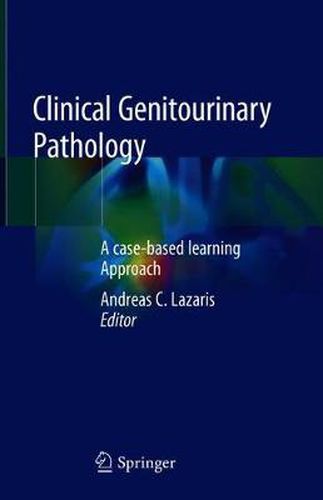Readings Newsletter
Become a Readings Member to make your shopping experience even easier.
Sign in or sign up for free!
You’re not far away from qualifying for FREE standard shipping within Australia
You’ve qualified for FREE standard shipping within Australia
The cart is loading…






This book presents clinicopathological insights into common genitourinary diseases, especially those of neoplastic nature, and introduces experiential learning based on case presentations (case-based learning). One of the tasks that trainees face is converting the extensive amount of data into medical experience. Using successive microscopic images, the book gradually and analytically presents diagnostic procedures for the genitourinary system (kidney, urinary bladder, prostate gland and testis). Characteristic cases are presented for each organ, each ending with a clinical commentary and key messages. This form of presentation helps readers acquire the valuable skill of effective diagnostic thinking, focusing their attention on the essential microscopic findings and disregarding insubstantial findings.
Although clinical applications are frequently based on pathological findings which therefore need to be clearly described and recorded, the importance of this in everyday medical practice is often ignored by medical students and downplayed by clinicians. Demonstrating how knowledge can be practically applied, the book is a valuable resource mainly for residents in pathology, urology and oncology but also for medical students with a special interest in histopathology.
$9.00 standard shipping within Australia
FREE standard shipping within Australia for orders over $100.00
Express & International shipping calculated at checkout
This book presents clinicopathological insights into common genitourinary diseases, especially those of neoplastic nature, and introduces experiential learning based on case presentations (case-based learning). One of the tasks that trainees face is converting the extensive amount of data into medical experience. Using successive microscopic images, the book gradually and analytically presents diagnostic procedures for the genitourinary system (kidney, urinary bladder, prostate gland and testis). Characteristic cases are presented for each organ, each ending with a clinical commentary and key messages. This form of presentation helps readers acquire the valuable skill of effective diagnostic thinking, focusing their attention on the essential microscopic findings and disregarding insubstantial findings.
Although clinical applications are frequently based on pathological findings which therefore need to be clearly described and recorded, the importance of this in everyday medical practice is often ignored by medical students and downplayed by clinicians. Demonstrating how knowledge can be practically applied, the book is a valuable resource mainly for residents in pathology, urology and oncology but also for medical students with a special interest in histopathology.